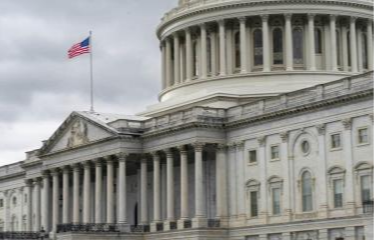
By María Josefina Arce
In recent hours, the threat of a possible U.S. government shutdown due to lack of funds has been reduced. Finally the House of Representatives, with the support of the Democratic caucus, approved a proposal by the Republican leader of the House, Mike Johnson, but still needs the approval of the Senate and the presidential signature.
Next Friday expires the 45-day extension granted last September by the then Republican leader of the House of Representatives, Kevin McCarthy. The agreement reached after a pact with the Democrats led to his impeachment by the most conservative members of his party's caucus.
Johnson's proposal extends funding for some government agencies until mid-January and for others until early February.
Thus, funding for veterans' support programs and projects in agriculture, transportation, housing, energy and mining would be extended until January 19, while the State Department, Defense and Homeland Security would have funding until February 2.
But this formula does not please all Republicans; in fact, of the 95 "no" votes, 93 were from members of that party. They point out that it does not contemplate the budget cuts they are demanding for various government programs and stricter immigration controls on the border with Mexico.
The spending plan also does not take into account U.S. President Joe Biden's request for more resources to support Ukraine and Israel, to which the government has allocated substantial funds, even in the face of questioning by many.
A government shutdown would mean that federal agencies, with some exceptions, would have to close their operations. Many government employees would not receive their salaries.
The same situation would be faced by workers in entities that perform essential functions and would continue to work during the shutdown.
From 1976 to the present, there have been about twenty government shutdowns in the United States, either for hours or days. In 2018 during Donald Trump's presidency, the longest in four decades was recorded.
Thirty-five days it lasted and had a cost of approximately eleven billion dollars. This situation was reached due to Trump's demand that additional funds be granted for the construction of a wall on the border with Mexico, however, it was met with the rejection of the Democrats.
Now the Senate will have to approve the proposal and President Joe Biden will have to sign it before midnight of the coming 17th, otherwise the United States would experience a new government shutdown, with the usual consequences for close to two million government employees and economic losses.

